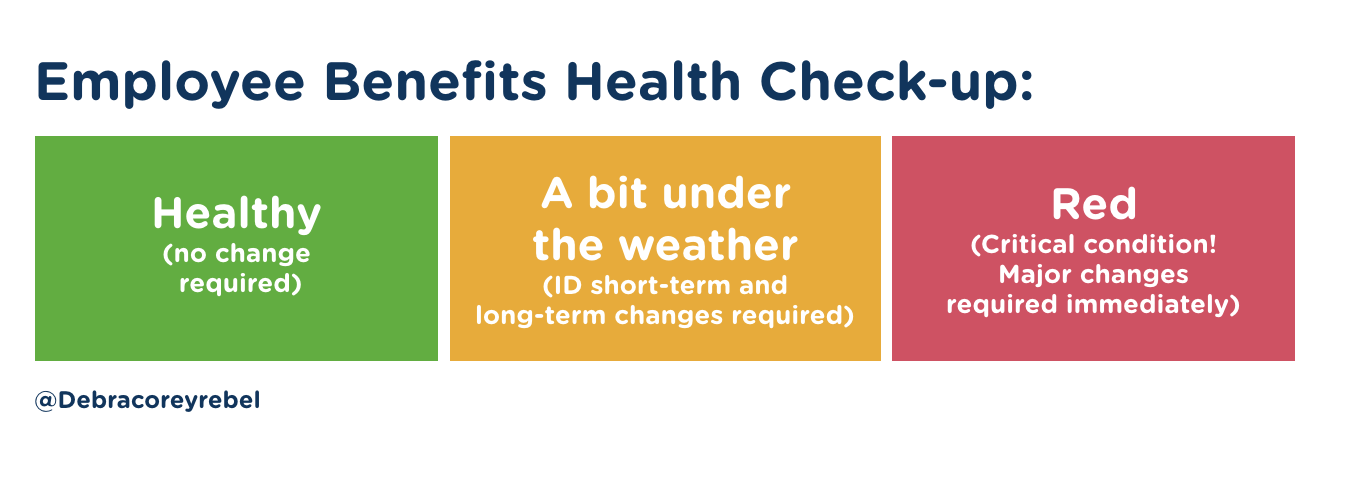We all go for health checks, right? Whether it’s to see a doctor, a dentist, an optician, or even to see a mechanic for our cars, it's important to check that everything is working as it should. Then why don’t we do the same with our benefit programs?
We should always be checking the health of our benefit programs to make sure that they’re healthy and performing the way we need them to.
Are you? If you're not, it might just be because you're not really sure how. To help, I’ve developed an approach over the years that will help you determine the health of your employee benefit programs through an employee benefits evaluation. Plus, we'll go over some tips on what you can do to “bring them back to health.” So, here’s the Doctor Deb check-up list:
Step 1: Review against your employee benefits strategy
The first step is to review your benefit programs against your employee benefits strategy, which are your key objectives for employee benefits. For example, do you have a strategy of having benefits that are competitive, so in-line with market practice? Or do you have a strategy of having benefits that are in-line with your company values? Or finally, and one that is a must for any benefits strategy, do you have a strategy that benefits are compliant, so in-line with legislation?
For each element of your strategy, you’ll need to assess each individual benefit program against them, giving it a "health score" to understand what if anything needs to be done to bring it back to health. Here’s how I like to think of health scores:

Step 2: Review against your benefits principles
The second step is to review your benefit programs against your employee benefit principles, which is a new step I’ve recently added to my health checks.
Think of it this way, your benefits strategy is how you check the basics, so for example, your weight. Your principles go that one level deeper, so using this example again, it checks your BMI (body mass index).
Together, these ensure that you truly understand the health of each benefit program.
To bring this concept to life, let me share with you the benefit principles we created at Reward Gateway. There are five of them, and they are: Fairness, Balance, Choice, Wow and Easy.
In this step, you again assess each individual benefit against these, giving them a health score.
Step 3: Review your results
The third step is to bring it all together by reviewing your results. I normally do this by pulling them together in a summary and then using this as a tool for discussing with my leadership team and in employee focus groups, but you decide what works best at your company. The aim of this step is to create a final summary of your results so that you can assess where to go next, which is your final step of the process.
.png?width=500&name=Screen%20Shot%202018-09-12%20at%204.25.07%20PM%20(wecompress.com).png)
Step 4: Create an employee benefits plan
The final step, and the most challenging one, is to create your plan. Get out your doctor’s “pad” and start writing out exactly what changes you will need to make, why you’re making them, and when they’ll take place.
It’s absolutely critical to make your recommendations and your plan based on your assessments and linked back to your strategy and principles. By doing this, you’ll find it easier to get approvals, make the difficult changes, and last but certainly not least, communicate the changes in an open and honest way to your employees.
The first time I used this approach at Reward Gateway, one of the outcomes was to remove a much-loved benefit program. What made the difference between acceptance by my employees and absolute rejection and disengagement, was by staying true to this approach and explaining in an open and honest way the "why" behind the changes.
 Debra Corey
Debra Corey
